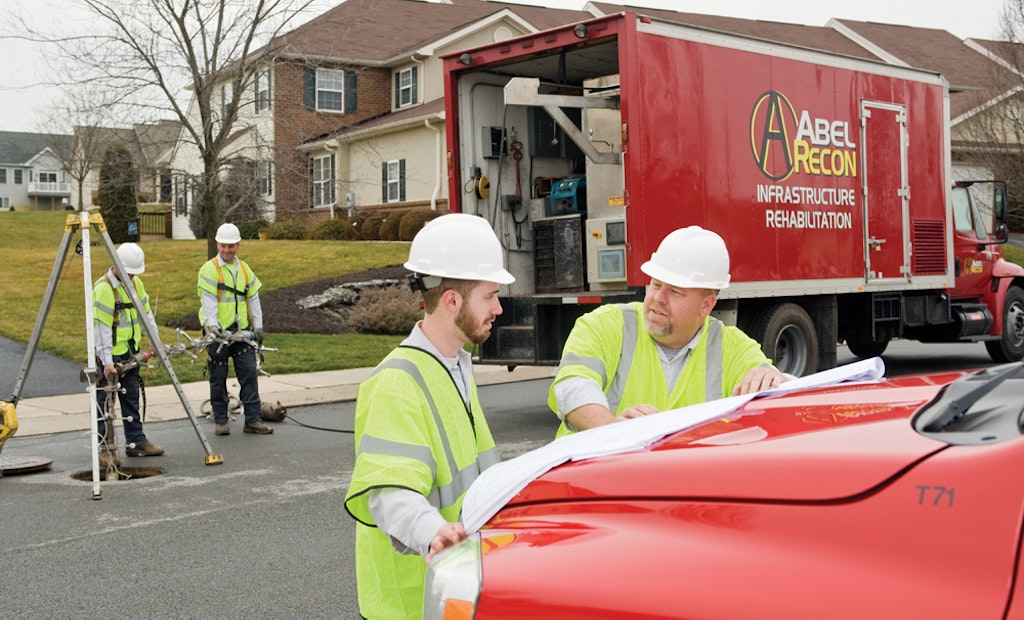Interested in Safety?
Get Safety articles, news and videos right in your inbox! Sign up now.
Safety + Get AlertsJob safety has progressed greatly since the mid-1970s when I began my water and wastewater career. At the time, some situations might have been considered comical if they hadn’t been so ridiculously dangerous to the folks involved. Until OSHA was created in 1971, workplace safety seemed to take a backseat to profits. And even then, safety progress was slow, especially where OSHA had no jurisdiction.
High-powered collection
In the early 1970s, most utilities began using high-pressure water hoses to clear blockages in the sanitary collection system, but many communities still used old methods. Most people in the industry today might never have heard of some of these older devices.
Duct rods were the most dangerous. These 3-inch-long rods were made of a hard wood with a brass connection on each end. To clear a sewer blockage, a technician would enter a manhole and insert a rod into the sewer line, pushing it into the line. Once the first rod was in place, the technician would attach another rod to the end of the first rod, continuing until he reached the blockage. The technician would then ram the assembled line of rods against the blockage until the clog broke free. In the echo-friendly confined space of a manhole, you could easily hear the roar of sewage when the blockage broke.
However, the technician couldn’t simply climb out before the manhole flooded. Before leaving, he had to secure the end of the chain of duct rods against the far wall of the manhole so it wouldn’t wash downstream and creating future backups.
With no confined-space entry safety procedures, no gas testing and no safety harnessing, it’s easy to see how a fatal accident could occur.
Adding insult to injury, many crews tested for flammable gases in the sewer system by tossing in a lit cigarette before entering. Supplying gloves or Hepatitis vaccinations to workers was simply not a consideration.
Treating an epidemic
Drinking water chlorination has been one of the most successful public health efforts in history, making epidemics and other waterborne diseases practically unheard of in modernized countries.
Chlorination was also used as a weapon in the trenches of World War I, and is a chemical that demands great respect. Before the 1990s, most water and wastewater treatment plants rated at 1 mgd or less used gaseous chlorine for disinfection delivered in 150-pound cylinders. Most facilities detected chlorine leaks using their noses first, and then with ammonia gas, which created a white cloud when whiffed across the suspected leak.
Some facilities had emergency coffin kits that encased a damaged cylinder to contain the chlorine if the cylinder or valve failed. But few provided the type of training that was truly needed.
I saw this lack of training firsthand during when a delivery truck driver lost control of a full cylinder of chlorine while unloading it at a plant dock. The tank fell, and the valve bonnet was knocked off, bending the cylinder valve and creating a hissing chlorine leak.
We were worried the cylinder might rupture completely due to the rushing caustic gas or the extreme cold created by the release of the compressed gas. The driver immediately called his supervisor while we stayed a healthy distance away debating whether to call the local fire department. The supervisor assured us he would have the situation under control and would arrive quickly.
True to his word, he was there in less than 15 minutes, not in a chemical emergency vehicle properly equipped to deal with the situation, but in an old Chevy El Camino. He and the truck driver took a deep breath and held it while loading the cylinder into the back of the El Camino. They then took off to where I assumed the company had facilities to deal with such things.
I was surprised to learn from that same truck driver on his next delivery that he and the supervisor had simply driven around the city’s freeway until the cylinder had leaked itself empty — they implemented the old adage “the solution to pollution is dilution.”
Changing times
With today’s more stringent regulations, and the threat of lawsuits, safety now has a much more important role in the workplace. This look back illustrates how far the industry has come in just 40 years.
About the Author
Steve Smith is water reclamation manager for the City of Canal Winchester, Ohio. Contact him at ssmith@canalwinchester.gov.






